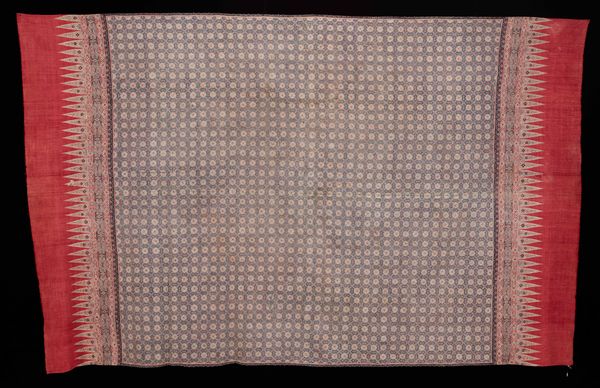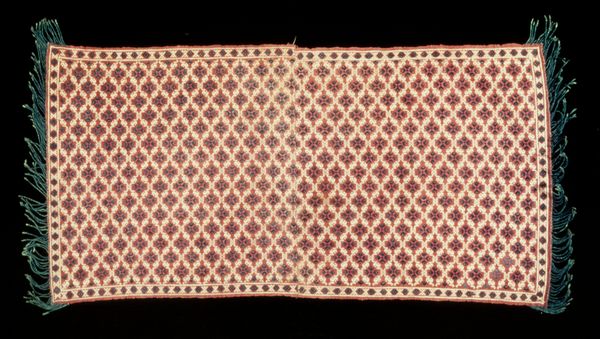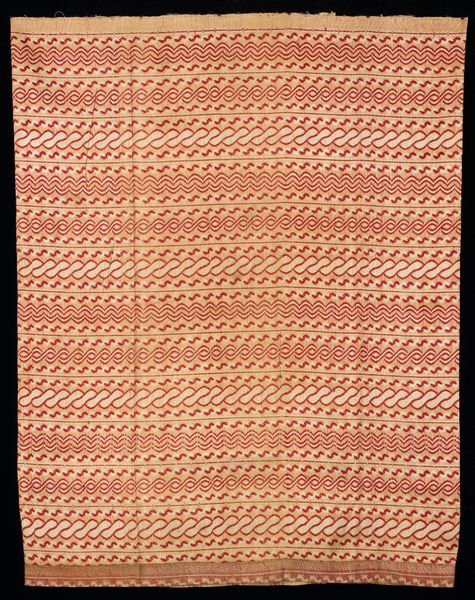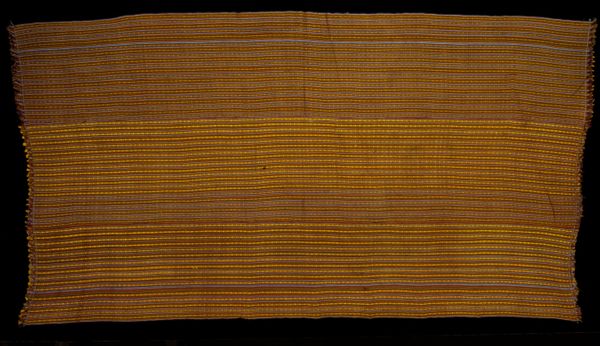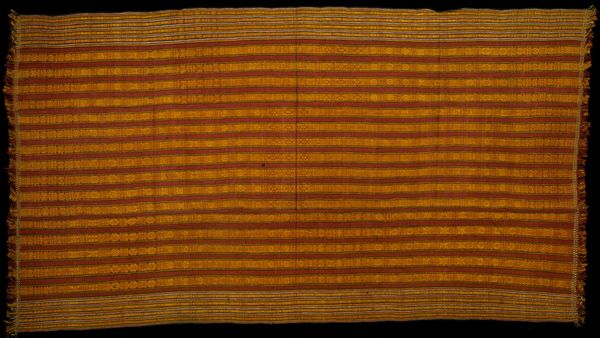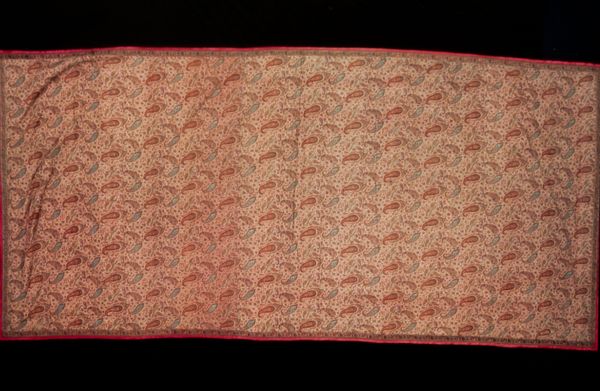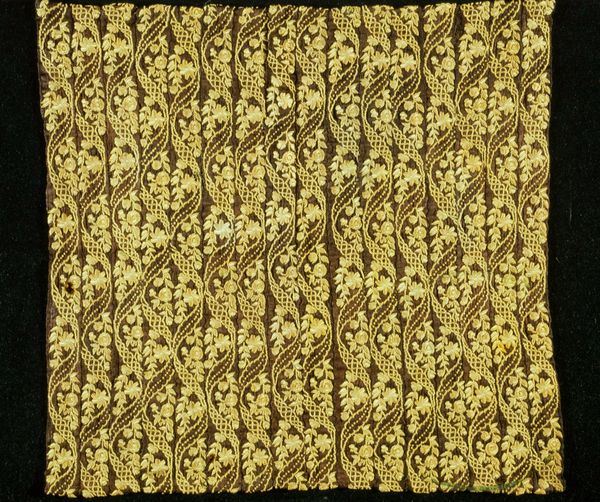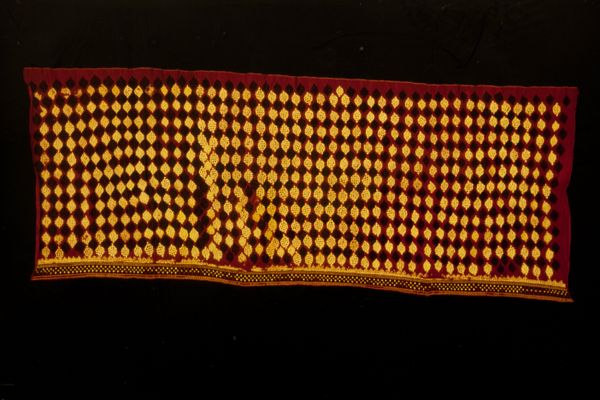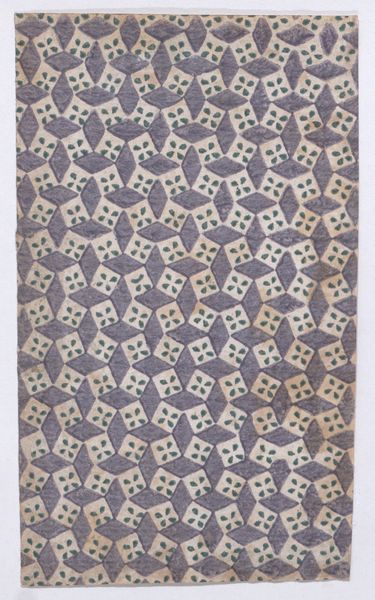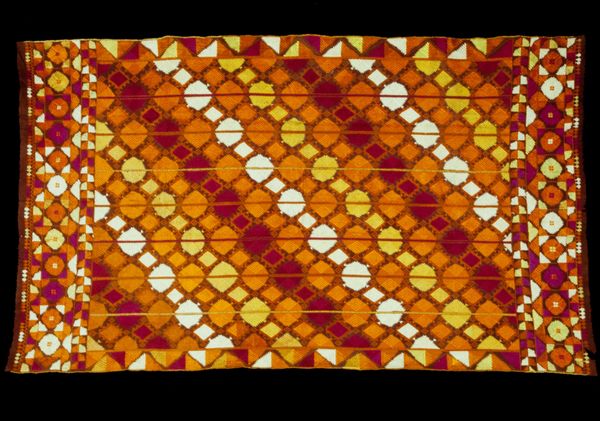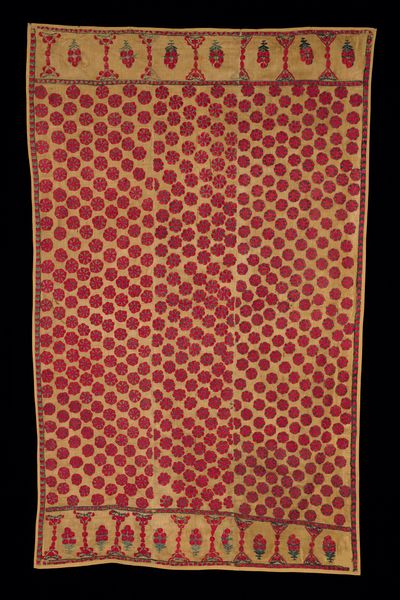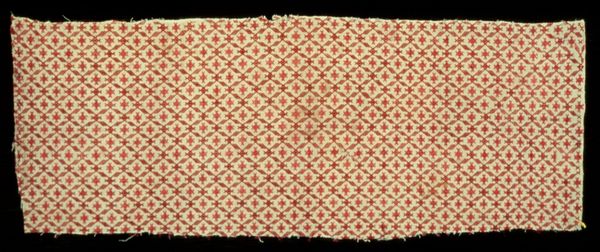
textile
#
folk-art
#
textile
#
folk-art
#
organic pattern
Copyright: Public Domain
Curator: At the Minneapolis Institute of Art, we're looking at an intricately patterned textile piece, simply titled "Panel," dating back to the 19th century. Editor: My first thought is 'soothing.' The repeated floral motifs in muted reds and purples create a very calm and ordered visual experience. What's it made of? Curator: It’s hard to tell definitively from looking at it here, but judging from the period and its style, likely a hand-printed cotton. These panels often served functional purposes. The scale indicates it may have been employed as either a shawl, decorative wall hanging, or possibly part of a larger garment or textile application within the domestic sphere. Editor: I'm immediately drawn to the repetition of the design. It speaks volumes about the standardization of production methods available at the time. Can you discuss the socio-economic implications, especially how textiles were traded and their value to society during the 19th century? Curator: Certainly. Orientalism, especially through textiles, held a significant sway over European markets. Factories producing these printed cottons were often directly competing or collaborating with international manufacturing. The availability and consumption of textiles became deeply tied to social status. The textile served both functional and ornamental purposes, and was a symbol of one's cultural awareness, so to speak. Editor: Right, and given the influence of pattern and decoration evident, what do you see in terms of rejecting traditional art hierarchies by integrating what some may dismiss as mere decoration with fine art? It shows how aesthetics can intersect social meanings. Curator: The piece, by incorporating elements considered "decorative", recontextualizes them. Through careful consideration of color palettes and design scale, objects typically relegated to lower cultural tiers have, here, gained a powerful status that is quite revealing of the power dynamics intrinsic to aesthetics. Editor: I am seeing both an embrace and a kind of subtle resistance to mainstream visual conventions... the repeated pattern offers an almost meditative feeling of regularity, yet the subtle irregularities hint at manual production practices. Curator: I agree. By displaying something like this, our museum makes statements regarding our commitment to the accessibility of artifacts produced under specific social conditions. We celebrate both aesthetics and cultural meanings here. Editor: A really striking work; the "Panel" manages to be visually calm and politically stimulating simultaneously. Thanks. Curator: Absolutely. It prompts us to rethink how items and ideas travel, and reshape meanings across various cultural landscapes.
Comments
No comments
Be the first to comment and join the conversation on the ultimate creative platform.
